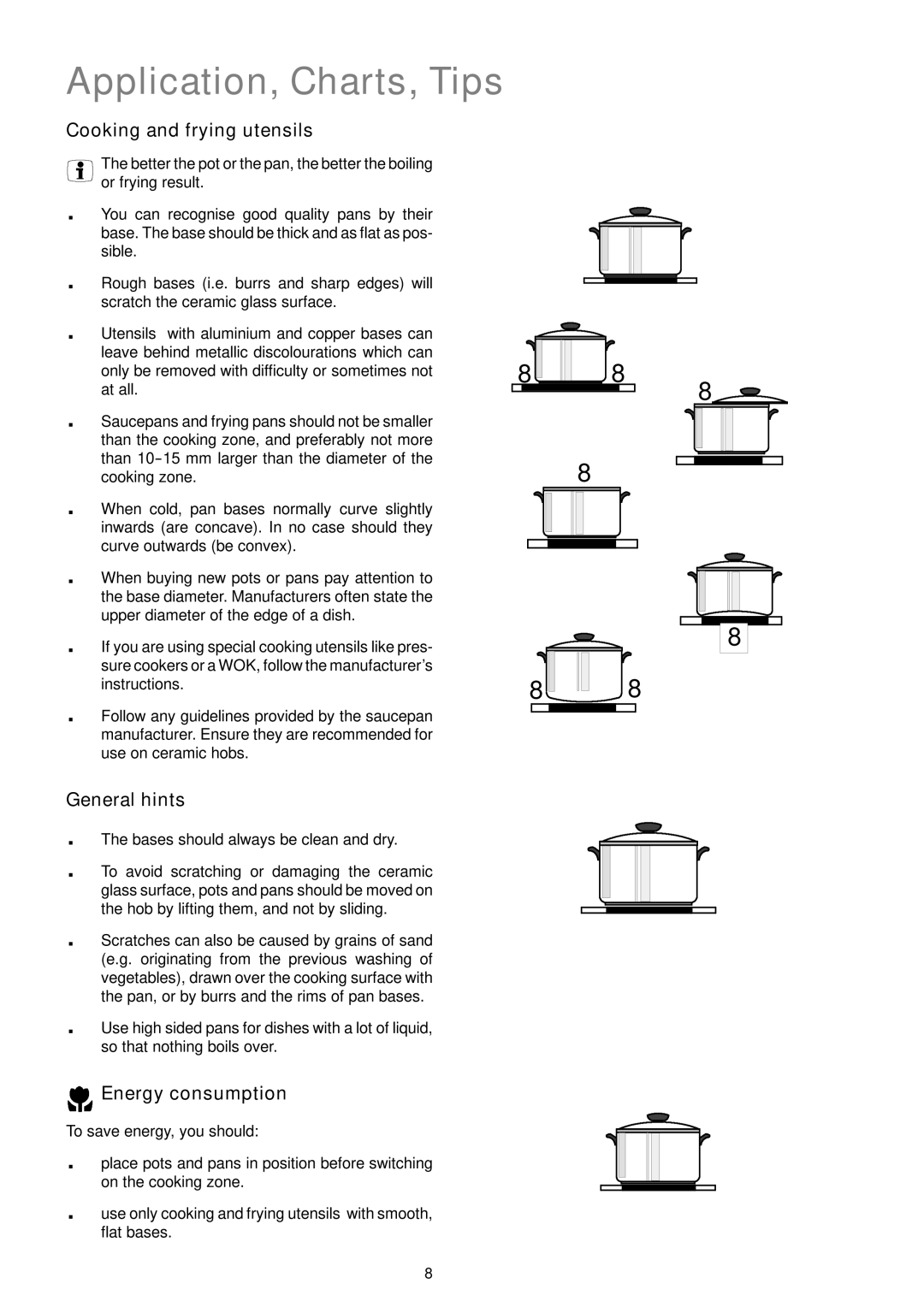EHP 600 K specifications
The Electrolux EHP 600 K is a sophisticated built-in induction cooktop designed for modern kitchens. Its sleek and minimalist design ensures it complements any kitchen aesthetic while providing essential functionality for home chefs and cooking enthusiasts.One of the defining features of the EHP 600 K is its induction cooking technology, which uses electromagnetic energy to heat pots and pans directly, rather than the surface of the cooktop. This results in faster cooking times, improved energy efficiency, and enhanced safety, as the cooktop remains cool to the touch when not in use. This technology is particularly beneficial for those who appreciate precision in cooking, allowing for quick adjustments to heat levels.
The cooktop comes equipped with four cooking zones, each featuring a distinct induction coil designed to cater to different pan sizes. This versatility ensures that whether you're using small or large cookware, the EHP 600 K can accommodate your needs without compromising efficiency. Additionally, the intelligent heat distribution across the zones minimizes energy wastage.
User-friendly touch controls on the front of the unit allow for easy operation. The intuitive interface enables users to quickly adjust heat settings, activate the booster function for rapid heating, and set timers for each zone, making it convenient for multitasking in the kitchen.
Safety features are also a highlight of the Electrolux EHP 600 K. The cooktop is equipped with a child lock to prevent accidental activation, as well as an automatic shut-off function that turns off the appliance if no cookware is detected after a certain period. This not only enhances safety for families with young children but also provides peace of mind for busy home cooks.
The design of the EHP 600 K includes a smooth, easy-to-clean glass surface that not only looks elegant but also simplifies maintenance. Any spills or splatters can be wiped away effortlessly, keeping the kitchen looking pristine.
In summary, the Electrolux EHP 600 K is an exceptional induction cooktop that combines style, efficiency, and safety. With its advanced technologies, user-friendly controls, and easy maintenance, it stands out as a reliable choice for anyone looking to elevate their cooking experience in the modern kitchen. Whether you're simmering, sautéing, or boiling, this cooktop is designed to meet a range of culinary needs while ensuring optimal performance.

